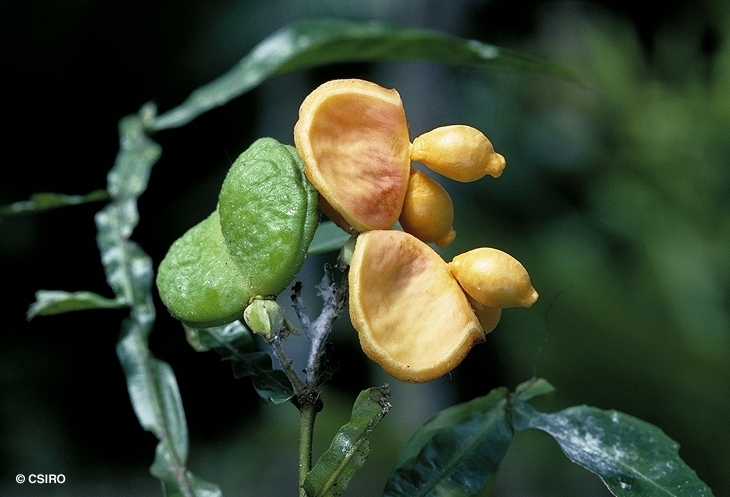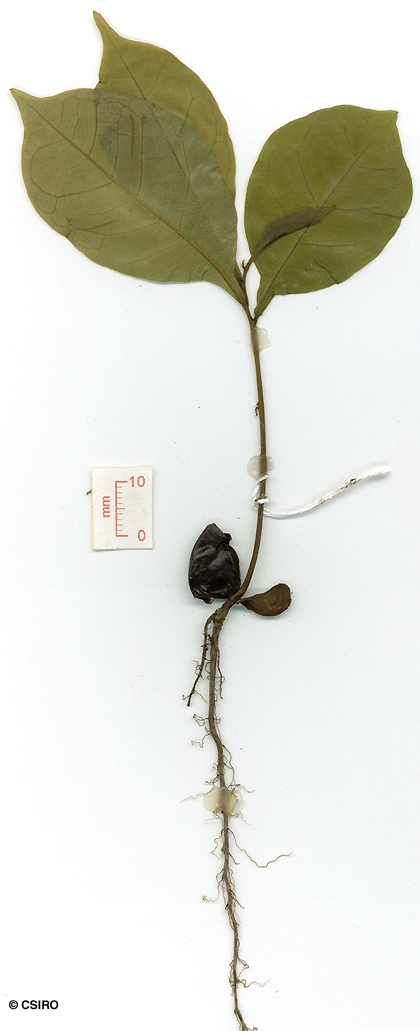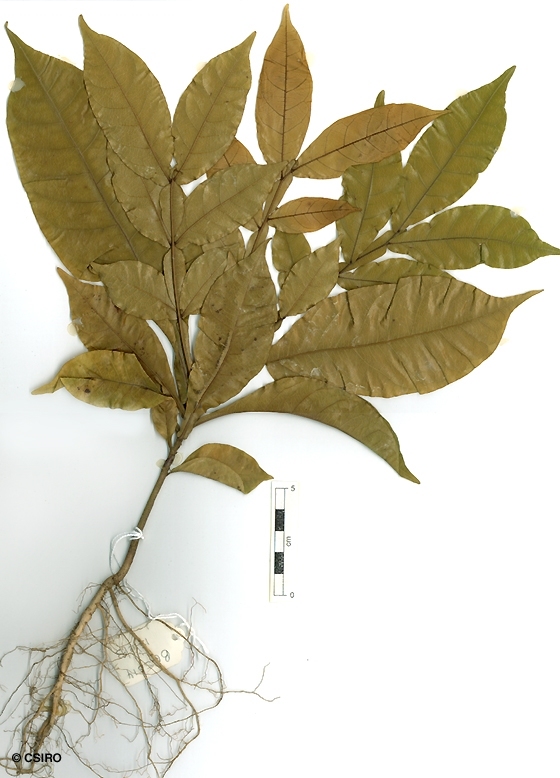Australian Tropical Rainforest Plants - Online edition
Harpullia frutescens F.M.Bailey






Bailey, F.M. (1889) Botany of the Bellenden-Ker Expedition (in Meston: Report of the Government Scientific Expedition of Bellenden-Ker Range) : 36. Type: Queensland, Mulgrave River, 1889, lecto: BRI. Fide S. T. Reynolds, Fl. Australia 25: 200 !1985).
Dwarf Harpullia
Usually flowers and fruits as a shrub about 1-2 m tall but also flowers when smaller.
Compound leaf petiole and rhachis conspicuously winged, rhachis about 4.5-18.5 cm long. Compound leaf rhachis terminating in a leafy spur. About 6-8 leaflets per leaf, each leaflet blade about 7.5-17 x 2.5-5 cm. Stellate hairs usually visible on some parts on the underside of the leaflet blade, terminal buds and young shoots. Compound leaf petiole swollen at its junction with the twig. Leaflets sessile or with a very short stalk. Lateral veins raised on the upper surface of the leaflet blade.
Fruit 2-locular, laterally compressed, about 1.2-1.6 cm long, outer surface finely stellate hairy, calyx persistent at the base. Seed about 10-15 x 7-10 mm, almost completely enclosed in the aril. Testa smooth, shiny black. Cotyledons pale green, very unequal in size. Radicle held close to the edge of the cotyledons.
Usually 2 cataphylls produced before the first true leaves. First pair of true leaves alternate or sub-opposite, ovate or elliptic. At the tenth leaf stage: leaf simple or compound, orange and black glands visible on the underside of young leaves. Midrib raised on the upper surface of the leaflet blade. Petiole winged or the leaves +/- sessile and leaf blade attenuate at the base. Seed germination time 28 to 62 days.
Endemic to NEQ. Altitudinal range from near sea level to 1000 m. Grows as an understory plant in undisturbed, well developed lowland and upland rain forest.





